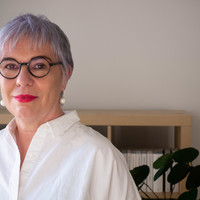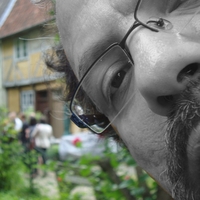
Rosemary Joyce
My research is complex, but united by an interest in how people make things and simultaneously are shaped by them. The things I spend most of my time thinking about range from pots and figurines to houses and landscapes. Much of my work is grounded in field archaeological work I have conducted in Honduras, and in museum research on collections from Honduras. My writing takes on a broader scope, using my standpoint in Honduras as a critical position from which to examine what traditionally is considered Mesoamerica and Lower Central America. I have worked on time periods from the first settled villages (ca. 1600 BC) to the colonial and republication periods (18th-20th century). The sample of papers here is non-random; it represents those things that are at least partially visible on Google Books. It in no way is representative of my past publishing (which includes significant work on the sociopolitics of archaeology in relation to cultural heritage issues including repatriation; on political and social organization; on gender and sexuality; and on the history of anthropology.
Address: Department of Anthropology
University of California, Berkeley
Kroeber Hall #3710
Berkeley, CA 94720-3710
Address: Department of Anthropology
University of California, Berkeley
Kroeber Hall #3710
Berkeley, CA 94720-3710
less
Related Authors
Noel B. Salazar
KU Leuven
David Stuart
The University of Texas at Austin
Andrea Peto
Central European University
Ruben López-Cano
Escola Superior de Música de Catalunya
Armando Marques-Guedes
UNL - New University of Lisbon
Giulia Sissa
Ucla
Enrico Cirelli
Università di Bologna
John Sutton
Macquarie University
Kristian Kristiansen
University of Gothenburg
Marie Louise Stig Sørensen
University of Cambridge
InterestsView All (24)










Uploads
Books by Rosemary Joyce
They examine the production, use, and disposal of marriage figurines from six sites—Campo Dos, Cerro Palenque, Copán, Currusté, Tenampua, and Travesia—and explore their role in rituals and ceremonies, as well as in the forming of social bonds and the celebration of relationships among communities. They find evidence of historical traditions reproduced over generations through material media in social relations among individuals, families, and communities, as well as social differences within this network of connected yet independent settlements.
Material Relations provides a new and dynamic understanding of how social houses functioned via networks of production and reciprocal exchange of material objects and will be of interest to Mesoamerican archaeologists, anthropologists, and art historians.
Drawing on insights from feminist theory, art history, phenomenology, anthropology and psychoanalysis, the book takes bodily materiality as a crucial starting point to the understanding and formation of self in any society, and sheds new light on Ancient Egyptian and Maya cultures.
The book shows how a comparative project can open up new lines of inquiry by raising questions about accepted assumptions as the authors draw attention to the long-term histories and specificities of embodiment, and make the case for the importance of ancient materials for contemporary theorization of the body.
For students new to the subject, and scholars already familiar with it, this will offer fresh and exciting insights into these ancient cultures.
Papers by Rosemary Joyce
They examine the production, use, and disposal of marriage figurines from six sites—Campo Dos, Cerro Palenque, Copán, Currusté, Tenampua, and Travesia—and explore their role in rituals and ceremonies, as well as in the forming of social bonds and the celebration of relationships among communities. They find evidence of historical traditions reproduced over generations through material media in social relations among individuals, families, and communities, as well as social differences within this network of connected yet independent settlements.
Material Relations provides a new and dynamic understanding of how social houses functioned via networks of production and reciprocal exchange of material objects and will be of interest to Mesoamerican archaeologists, anthropologists, and art historians.
Drawing on insights from feminist theory, art history, phenomenology, anthropology and psychoanalysis, the book takes bodily materiality as a crucial starting point to the understanding and formation of self in any society, and sheds new light on Ancient Egyptian and Maya cultures.
The book shows how a comparative project can open up new lines of inquiry by raising questions about accepted assumptions as the authors draw attention to the long-term histories and specificities of embodiment, and make the case for the importance of ancient materials for contemporary theorization of the body.
For students new to the subject, and scholars already familiar with it, this will offer fresh and exciting insights into these ancient cultures.